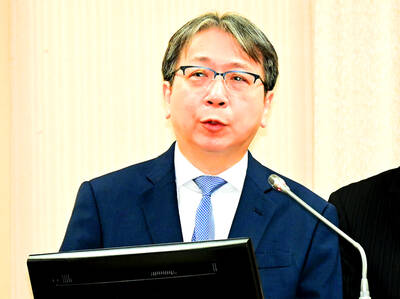A US skipper held on a lifeboat by Somali pirates dived into the sea yesterday in a dramatic break for freedom before being hauled back onboard, US networks said, as his captors demanded a ransom.
Richard Phillips jumped into the water during the night and tried to swim toward a nearby US destroyer, the USS Bainbridge, but the pirates jumped into the water and recaptured him, three television networks reported.
The escape bid came as the pirates said they were demanding an unspecified amount of money for the skipper’s release and warned against using force to secure his freedom.
US military officials told CNN that Phillips was fine and that the pirates did not hurt him.
Phillips has been held hostage on the lifeboat since Wednesday when the gang of four pirates hijacked the Maersk Alabama aid ship. Although the pirates were later overpowered by the unarmed American crew, they were able to separate Phillips and bundle him into a lifeboat.
The US navy has already encircled the lifeboat and more US ships, including some from a counter-piracy task force out of Bahrain, are on the way to join the Bainbridge, which arrived on Thursday, defense officials said.
The Bainbridge, accompanied by a P-3 Orion surveillance plane, was preventing the pirates from moving their hostage to a larger ship.
“The safe return of the captain is the top priority,” US Secretary of Defense Robert Gates told reporters in Washington.
The commander of the pirates vowed that Phillips would remain a captive until a ransom was stumped up for his release.
“We are demanding to get ransom and to return home safely before releasing the captain,” Abdi Garad said by telephone from Eyl, the pirates’ lair in largely lawless Somalia.
Garad also said their men were negotiating with the US navy “not to be arrested if they release the captain and the American officials will hopefully fulfill that condition, otherwise the captain will not be released.”
With six hijackings in the space of four days, Somalia’s pirates have dashed any hope that an increasing naval presence in the region could significantly dent a scourge that is disrupting one of the world’s busiest maritime trade routes.
Since the start of the year, piracy watchdogs had recorded a slump in the number of attacks and their success rate compared to last year, during which pirates attacked close to 150 ships and harvested a bumper crop of ransom money.

The US government has signed defense cooperation agreements with Japan and the Philippines to boost the deterrence capabilities of countries in the first island chain, a report by the National Security Bureau (NSB) showed. The main countries on the first island chain include the two nations and Taiwan. The bureau is to present the report at a meeting of the legislature’s Foreign Affairs and National Defense Committee tomorrow. The US military has deployed Typhon missile systems to Japan’s Yamaguchi Prefecture and Zambales province in the Philippines during their joint military exercises. It has also installed NMESIS anti-ship systems in Japan’s Okinawa

TRAGEDY STRIKES TAIPEI: The suspect died after falling off a building after he threw smoke grenades into Taipei Main Station and went on a killing spree in Zhongshan A 27-year-old suspect allegedly threw smoke grenades in Taipei Main Station and then proceeded to Zhongshan MRT Station in a random killing spree that resulted in the death of the suspect and two other civilians, and seven injured, including one in critical condition, as of press time last night. The suspect, identified as a man surnamed Chang Wen (張文), allegedly began the attack at Taipei Main Station, the Taipei Fire Department said, adding that it received a report at 5:24pm that smoke grenades had been thrown in the station. One man in his 50s was rushed to hospital after a cardiac arrest

PUBLIC SAFETY: The premier said that security would be tightened in transport hubs, while President Lai commended the public for their bravery The government is to deploy more police, including rapid response units, in crowded public areas to ensure a swift response to any threats, President William Lai (賴清德) said yesterday after a knife attack killed three people and injured 11 in Taipei the previous day. Lai made the remarks following a briefing by the National Police Agency on the progress of the investigation, saying that the attack underscored the importance of cooperation in public security between the central and local governments. The attack unfolded in the early evening on Friday around Taipei Main Station’s M7 exit and later near the Taipei MRT’s Zhongshan

ON ALERT: Taiwan’s partners would issue warnings if China attempted to use Interpol to target Taiwanese, and the global body has mechanisms to prevent it, an official said China has stationed two to four people specializing in Taiwan affairs at its embassies in several democratic countries to monitor and harass Taiwanese, actions that the host nations would not tolerate, National Security Bureau (NSB) Director-General Tsai Ming-yen (蔡明彥) said yesterday. Tsai made the comments at a meeting of the legislature’s Foreign Affairs and National Defense Committee, which asked him and Minister of National Defense Wellington Koo (顧立雄) to report on potential conflicts in the Taiwan Strait and military preparedness. Democratic Progressive Party (DPP) Legislator Michelle Lin (林楚茵) expressed concern that Beijing has posted personnel from China’s Taiwan Affairs Office to its